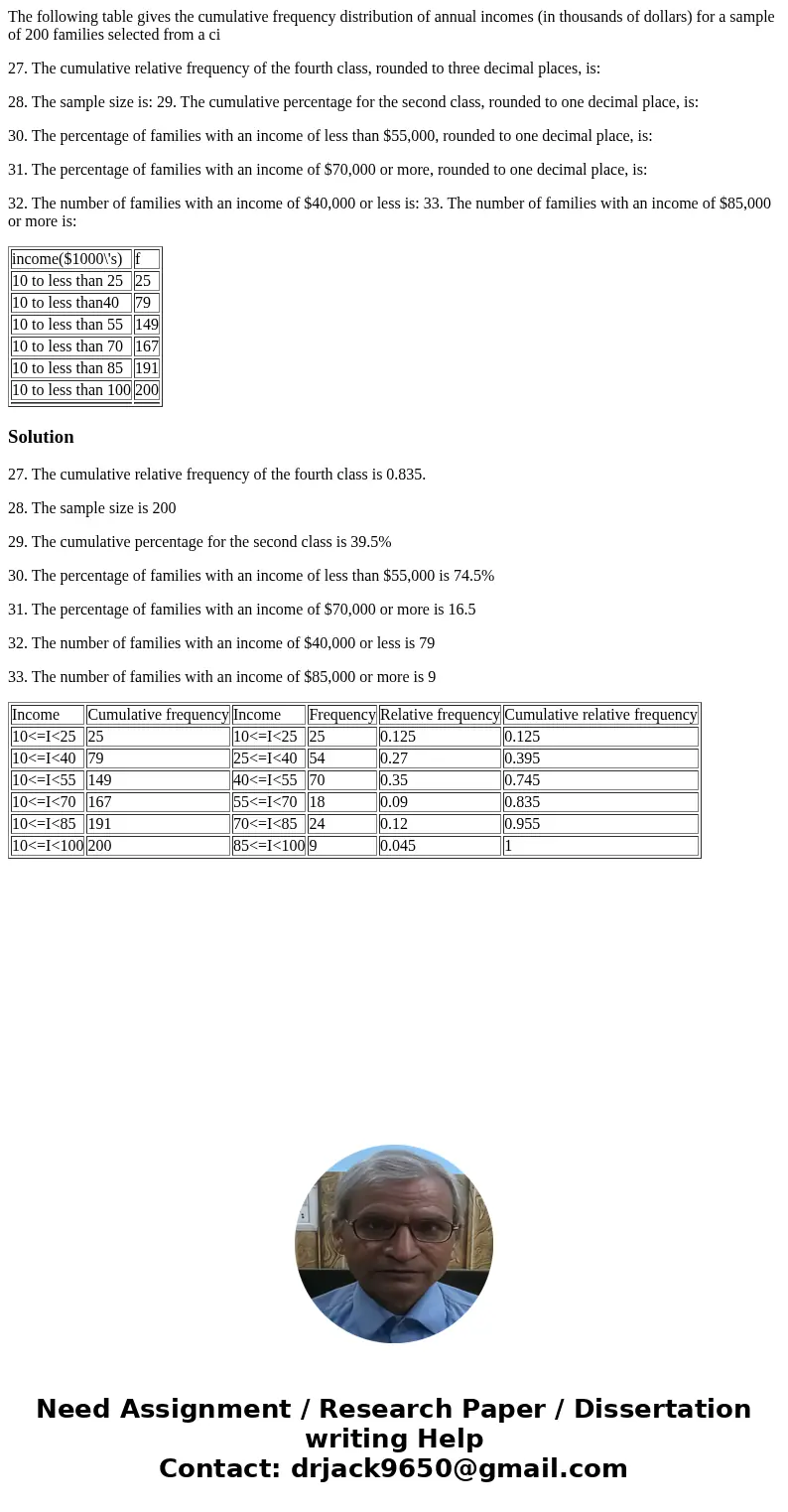The following table gives the cumulative frequency distribut
The following table gives the cumulative frequency distribution of annual incomes (in thousands of dollars) for a sample of 200 families selected from a ci
27. The cumulative relative frequency of the fourth class, rounded to three decimal places, is:
28. The sample size is: 29. The cumulative percentage for the second class, rounded to one decimal place, is:
30. The percentage of families with an income of less than $55,000, rounded to one decimal place, is:
31. The percentage of families with an income of $70,000 or more, rounded to one decimal place, is:
32. The number of families with an income of $40,000 or less is: 33. The number of families with an income of $85,000 or more is:
| income($1000\'s) | f |
| 10 to less than 25 | 25 |
| 10 to less than40 | 79 |
| 10 to less than 55 | 149 |
| 10 to less than 70 | 167 |
| 10 to less than 85 | 191 |
| 10 to less than 100 | 200 |
Solution
27. The cumulative relative frequency of the fourth class is 0.835.
28. The sample size is 200
29. The cumulative percentage for the second class is 39.5%
30. The percentage of families with an income of less than $55,000 is 74.5%
31. The percentage of families with an income of $70,000 or more is 16.5
32. The number of families with an income of $40,000 or less is 79
33. The number of families with an income of $85,000 or more is 9
| Income | Cumulative frequency | Income | Frequency | Relative frequency | Cumulative relative frequency |
| 10<=I<25 | 25 | 10<=I<25 | 25 | 0.125 | 0.125 |
| 10<=I<40 | 79 | 25<=I<40 | 54 | 0.27 | 0.395 |
| 10<=I<55 | 149 | 40<=I<55 | 70 | 0.35 | 0.745 |
| 10<=I<70 | 167 | 55<=I<70 | 18 | 0.09 | 0.835 |
| 10<=I<85 | 191 | 70<=I<85 | 24 | 0.12 | 0.955 |
| 10<=I<100 | 200 | 85<=I<100 | 9 | 0.045 | 1 |

 Homework Sourse
Homework Sourse